The hardest part is often beginning—and the beginning is exactly where we need to start. It is one’s own, not another’s, and it is not to be rushed—that, of all things. For when we do, we end up overwhelmed and discouraged. The garden teaches this every springtide. We can force-start as many seedlings as we like, but in the end—we cannot rush the garden.
“Do not despise these small beginnings, for the Lord rejoices to see the work begin…”1
A vision given from the Lord of Hosts to the prophet Zechariah about Zerubbabel, the governor of Judah, who had begun the long, difficult task of rebuilding the Temple after the exile. The work was slow, materials few, and to build something that might pale in comparison to what once was…
A world is at our fingertips—where we can see anything from the gardens of a historic castle to a neatly pruned and plotted cottage bed. Another’s garden, admired surely—but to begin envying it? Well, that story has been told and retold for centuries. Beware the eye that wanders, for it will rob you of the joy found in the soil beneath your feet.
For an inspired springtide, I’ve compiled a quick-start guide for what to plant. If you’re anything like me—just tell me what to do, and I’ll take it from there. So here’s a list of historically informed, easy-to-grow herbs, vegetables, fruits, and flowers to plant this spring—each with a bit of history, lore, and meaning—for the beginnings of your garden.
🌿 3 HERBS (Medicinal + Culinary + Monastic)
A foundation for any Still Nook garden — simple to grow, sacred to history, and useful in daily herbal life.
🌱 Sage (Salvia officinalis)
“Cur moriatur homo cui salvia crescit in horto?”
“Why should a man die whilst sage grows in his garden?”
— Medieval Latin proverb, sometimes attributed with Martin Luthher, quoted widely in monastic herbals
Sage was a cornerstone of monastic healing. Included in Charlemagne’s (Emperor of the Carolingian Empire, 768–814) Capitulare de Villis and praised by Hildegard of Bingen (12th-century Benedictine abbess and herbalist), it was used for body and soul.
Medicinal use:
Sore throats, poor digestion, menstrual regulation, memory loss, mouth ulcers, night sweats
How to grow:
Prefers full sun and well-drained soil. Easy to grow from seed, but even easier to start from a nursery cutting or small plant. Can be overwintered indoors in colder zones.
How to use:
Harvest leaves before flowering. Use in teas, infused vinegars, or meals to support digestion, memory, and immune function.
Electuary featuring sage:
🌬️ Cold & Clear – Raw Local Honey, Elderberry, Thyme, Sage, Mint, Hyssop, Yarrow
For respiratory relief, cold & flu season, and immune support.
🌿 Hyssop (Hyssopus officinalis)
Used by early Christians and medieval monks as both a purifier and a respiratory remedy, hyssop is aromatic, antiseptic, and bee-attracting. It was a staple in still rooms and cloister gardens alike.
Medicinal use:
Coughs, bronchitis, chest congestion, circulation, sluggish digestion
How to grow:
Can be started from seed with patience, but much easier to establish from a seedling or young plant. Prefers sun, dry soil, and good drainage. Drought-tolerant and deer-resistant once established.
How to use:
Harvest flowering tops in mid-summer. Use sparingly in tea or honey for winter illness or as a clarifying steam.
Electuary featuring hyssop:
Cold & Clear – Raw Local Honey, Elderberry, Thyme, Sage, Mint, Hyssop, Yarrow
Hyssop supports deep breathing and immune resilience.
🌿 Lemon Balm (Melissa officinalis)
“The herb of cheer” — beloved from Theophrastus (Greek philosopher, 3rd c. BCE) to Hildegard of Bingen (12th-century abbess and herbalist), who praised its ability to “soothe the troubled heart.”
Lemon balm is a sweet, citrus-scented herb long used to support the nervous system, calm the heart, and lift low spirits. It was treasured in monastic gardens for easing melancholy and viral illness alike.
Medicinal use:
Anxiety, nervous tension, sleeplessness, viral infections, digestive upset, low mood
How to grow:
Very easy to grow from seed or start. Thrives in full sun to part shade. Spreads by root—ideal for containers or raised beds. Trim regularly to prevent flowering and encourage lush growth.
How to use:
Harvest leaves before flowering. Use fresh in teas, infused honey, or tinctures. Wonderful for children’s blends and gentle emotional support.
Electuaries featuring lemon balm:
Gathered Mind *Coming soon* – Raw Local Honey, Organic Reishi, Gotu Kola, Lemon Balm, Passionflower, Schisandra Berry, Rose Petal Supports calm focus, emotional steadiness, and cognitive clarity.
Headcase – Raw Local Honey, Organic Skullcap, Chamomile, Lemon Balm, Feverfew, Lavender, Ginger Relieves mental tension, racing thoughts, and sensory overwhelm.
Before Birth – Raw Local Honey, Organic Linden, Lemon Balm, Chamomile, Raspberry Leaf, Lavender, GingerA gentle prenatal blend designed to calm body and mind in late pregnancy.
Battle Scars – Raw Local Honey, Organic Hibiscus, Rose, Schisandra, Lemon Balm, Calendula, Sea SaltSupports emotional regulation, bodily recovery and nervous system repair during physical stress or transition.
🥕 3 VEGETABLES (Simple + Sustaining + Symbolic)
Staples of the medieval monastic kitchen garden: nourishing, practical, and surprisingly hardy.
🧅 Leek (Allium ampeloprasum)
Highly valued in medieval kitchens, leeks were grown year-round in monastic gardens and appear in many Lenten recipes. Charlemagne (Emperor, 768–814) listed them in the Capitulare de Villis, and they became a national emblem of Wales—beloved for both symbolism and soup.
Nutritional/Medicinal use:
Supports digestion, circulation, and acts as a gentle diuretic.
How to grow:
Very easy from starts or young transplants. Can be started from seed indoors. Cold-hardy and prefers full sun. Blanch by mounding soil as they grow for tender white stalks.
How to use:
Sautéed in soups, stews, and broths. Pairs beautifully with sage and thyme in winter remedies
🥬 Cabbage (Brassica oleracea)
The backbone of the medieval diet. Easy to store and versatile in the monastic kitchen. Hilary of Poitiers and Hildegard of Bingen (abbess, 12th century) both praised it for its ability to “purify the stomach.”
Medicinal use:
Used historically for ulcers, digestion, and poultices for joint pain or mastitis.
How to grow:
Easy from starts. Requires space, sun, and cool weather. Best planted early spring or late summer for fall crops.
How to use:
Eat raw, cooked, or fermented. Cabbage leaves were also wrapped around herbs as poultices in monastic healing rooms.
🌿 Fennel (Foeniculum vulgare)
A favored plant of Charlemagne (Emperor of the Carolingian Empire, 768–814), fennel was listed in his Capitulare de Villis as a required plant on imperial estates. Monks grew it for its culinary value and digestive power. Fennel was often given after meals in monasteries and included in remedies for infants, nursing mothers, and those with sluggish digestion.
Medicinal use:
Relieves gas and bloating, soothes colic, eases nausea, and may support lactation. Fennel seeds were chewed to freshen breath and calm the gut.
How to grow:
Easy from seed. Direct sow after frost in full sun. The tall, feathery foliage is beautiful and functional. Let some go to seed for pollinators and replanting.
How to use:
Use fronds fresh in salads or teas. Dry seeds for spice, digestive tonics, or herbal honey infusions.
Electuary featuring fennel:
Belly Balance – Raw Honey, Organic Chamomile , Fennel, Dandelion Root, Angelica, Licorice Root, Ginger, Peppermint. Crafted to gently soothe nausea, support digestion, and promote gut harmony.
🌸 3 FLOWERS (Devotional + Edible + Medicinal)
More than beauty — these were planted with purpose, from chapel to stillroom.
💜 Violet (Viola odorata)
Symbol of humility and sacred love, often planted near doorways and graves. Known as a grief herb and lung soother. Hildegard of Bingen recommended violets for sadness and skin ailments.
Medicinal use:
Supports respiratory health, gentle lymphatic movement, and emotional calm.
How to grow:
Easy from starts or divisions. Prefers partial shade and moist soil. Naturalizes well in woodland edges or raised beds.
How to use:
Fresh or dried flowers for tea, syrup, or salve. Leaves can be used in poultices.
🌼 Calendula (Calendula officinalis)
Known in medieval texts as "Mary’s Gold", calendula was prized for its vibrant golden color and powerful healing properties. Monks used it in wound salves, eye washes, and soups, believing it to warm and purify the blood. Hildegard of Bingen (12th-century abbess and herbalist) recommended it for skin ailments and digestive inflammation.
Its bright blossoms were also symbolic: calendula was associated with the Virgin Mary, often planted in cloister beds and chapel borders.
Medicinal use:
Anti-inflammatory, antifungal, wound healing, digestive support, lymphatic stimulant.
How to grow:
Extremely easy from seed. Prefers full sun, blooms continuously if deadheaded, and self-sows readily. Great companion plant in kitchen gardens.
How to use:
Petals can be dried for tea, infused into oil for skin salves, or added fresh to salads and honey.
Electuary featuring calendula:
Battle Scars – Raw Local Honey, Organic Hibiscus, Rose, Schisandra, Lemon Balm, Calendula, Sea Salt
Designed for emotional regulation, stress resilience, and gentle inner repair. Calendula supports gut lining, skin healing, and calm digestion from within.
🌹 Rose (Rosa gallica officinalis)
The Apothecary’s Rose, sacred to the Virgin Mary, was a staple in medieval cloister gardens — not only for its beauty but for its potent medicinal and emotional effects. Hildegard of Bingen (12th-century abbess and herbalist) praised rose for “cooling a heated mind,” and it was commonly used in syrups, electuaries, vinegars, and sacred anointing oils.
Symbolizing both divine love and grief, rose petals were often gathered at dawn and dried carefully for healing teas and salves.
Medicinal use:
Calms the heart, soothes the digestive tract, supports emotional release, astringent for skin and tissues.
How to grow:
Best from bare-root or potted starts. Requires full sun, airflow, and well-drained soil. Rosa gallica, also known as the Apothecary’s Rose, is highly fragrant and easy to maintain once established.
How to use:
Use fresh or dried petals in teas, honey infusions, syrups, and skincare remedies. Pairs well with cacao, lemon balm, and shatavari for hormonal and emotional balance.
Electuary featuring rose:
Eros – Raw Local Honey, Organic Damiana, Rose, Cacao, Cinnamon, Cordyceps — A rich, sensual blend crafted to support connection, warmth, and libido — rose adds heart-centered calm and soft emotional opening.
Battle Scars – Raw Local Honey, Organic Hibiscus, Rose, Schisandra, Lemon Balm, Calendula, Sea Salt Rose anchors this blend in emotional steadiness and gentle nourishment during recovery or stress.
Gathered Mind *Coming Soon*– Raw Local Honey, Organic Reishi , Gotu Kola (aerial parts), Lemon Balm, Passionflower, Schisandra Berry, Rose Petal Rose supports calm clarity and emotional integration alongside herbs for mental focus.
🍎 3 FRUITS (Sacred + Nourishing + Historical)
Orchard staples tied to medicine and medieval symbolism.
🍓 Strawberry (Fragaria vesca)
Associated with Mary’s purity and often grown along cloister edges. Symbolized humility and beauty.
Medicinal use:
Leaves used for digestion and minor inflammation; fruit high in vitamin C.
How to grow:
Very easy from runners or starts. Prefers sun, spreads by runner. Alpine varieties work well in raised beds.
How to use:
Fresh fruit for eating; leaves for tea. Can be dried or frozen. Leaves are mildly astringent and used in gut blends.
🍏 Apple (Malus domestica)
Sacred in Celtic and Christian tradition, apple trees were common in monastic orchards. Symbolized knowledge, healing, and paradise.
Medicinal use:
Astringent, digestive, gently cooling. Apples were stewed with herbs for people who needed nourishing
How to grow:
Start with dwarf or espaliered tree if space is limited. Requires sun and pruning.
How to use:
Eaten fresh or cooked, infused with cinnamon, sage, or rose. Apple cider vinegar was often used in monastic medicine.
🍐 Pear (Pyrus communis)
Loved for their sweetness and storability. Often trained along walls in monastic gardens. Hildegard used pear for strengthening the lungs and liver.
Medicinal use:
Cooling, moistening, soothing to throat and digestion.
How to grow:
Easy from bare-root or container-grown tree. Needs full sun and moderate pruning. Dwarf varieties suit smaller spaces.
How to use:
Fresh or poached. Pairs well with warming herbs like ginger and cinnamon.
You’re ready to begin! Add these to your Still Book along with your notes for those that come after you. Next year we will add more!
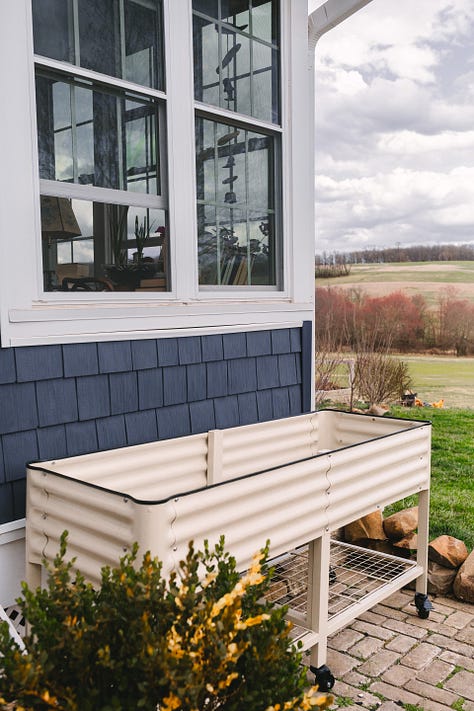
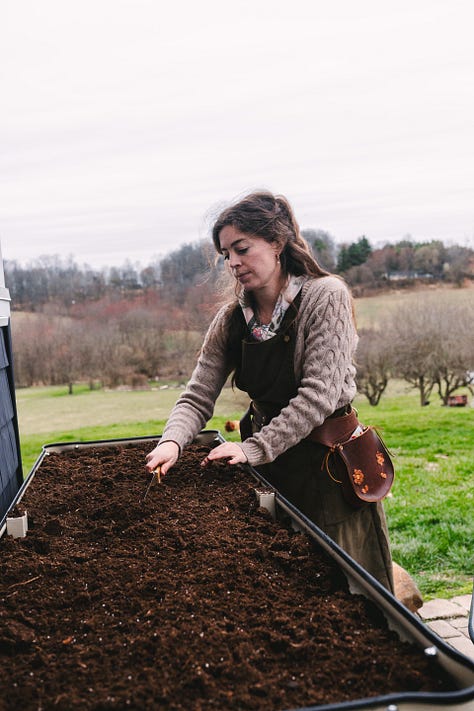
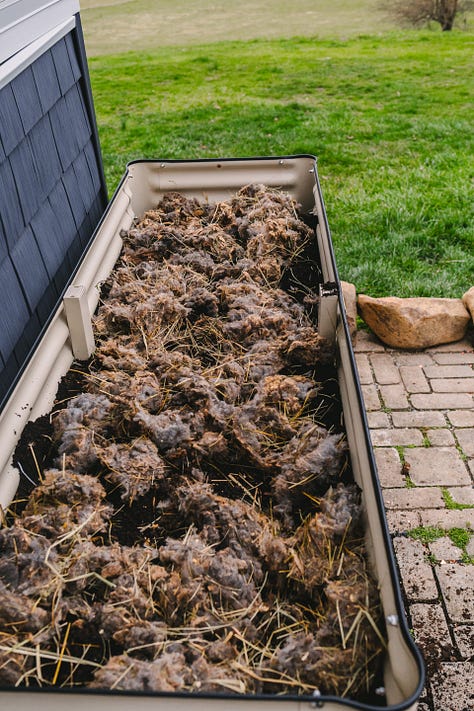
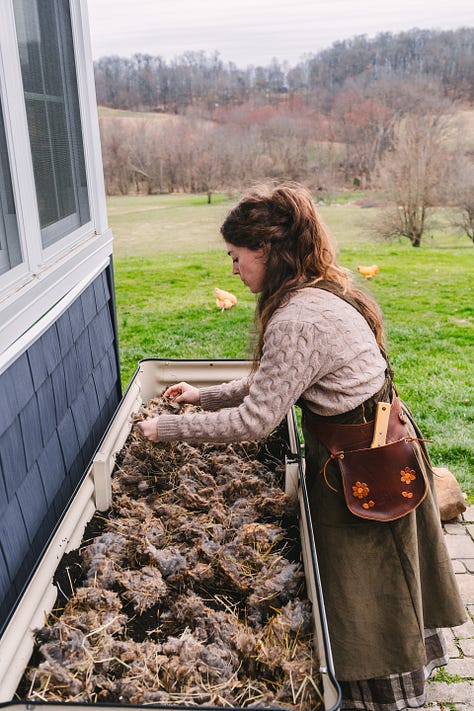


My 2x6 Vego Raised garden bed is a compact, raised sanctuary built for easy tending and deep roots. It’s where I’m planting the beginnings of a monastic-inspired garden—herbs, heirloom vegetables, and blooms—all in a space small enough to manage but rich enough to remember. If you’re needing the perfect piece for smaller, meaningful spaces, this is it! VEGO RAISED BED
Zechariah 4:10 (NLT)



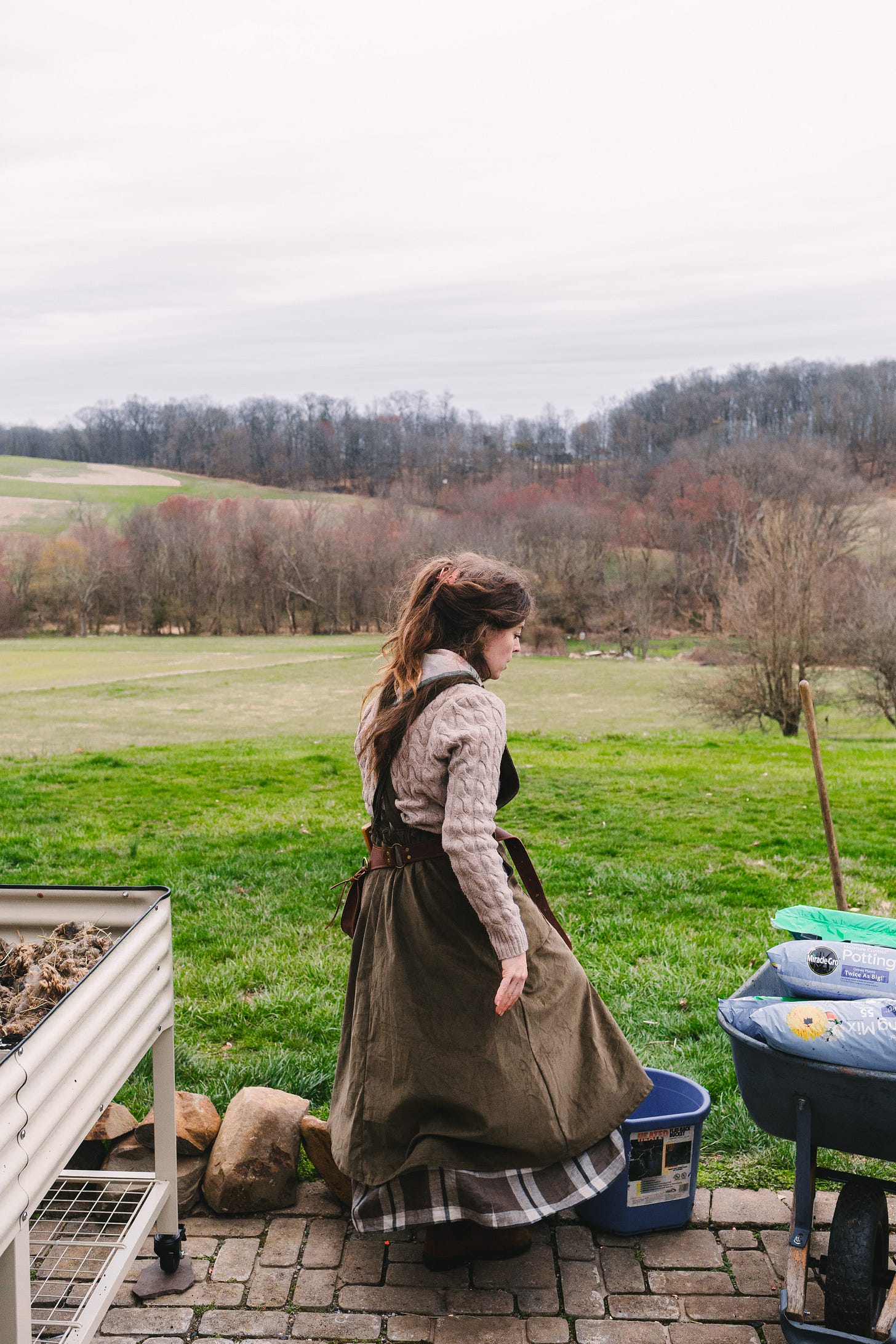

Thank you for all your information. I have some of those listed but added chamomile for tea and pink eye.
This is so perfect!! Love this 🌿💫